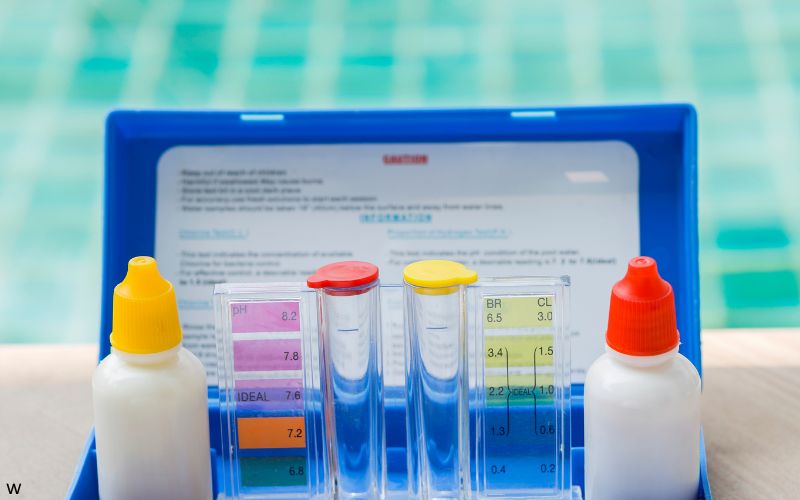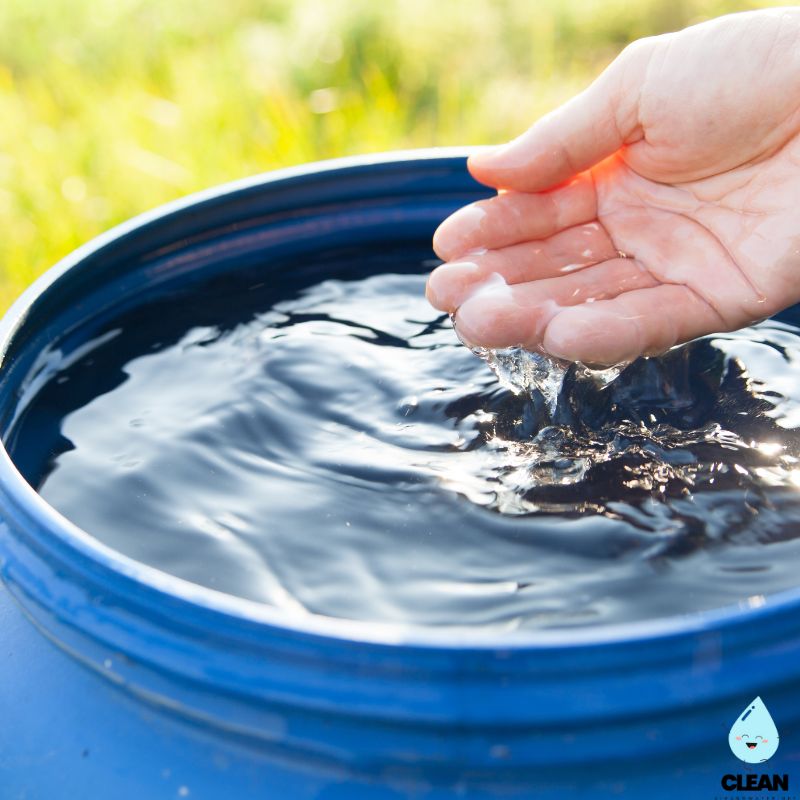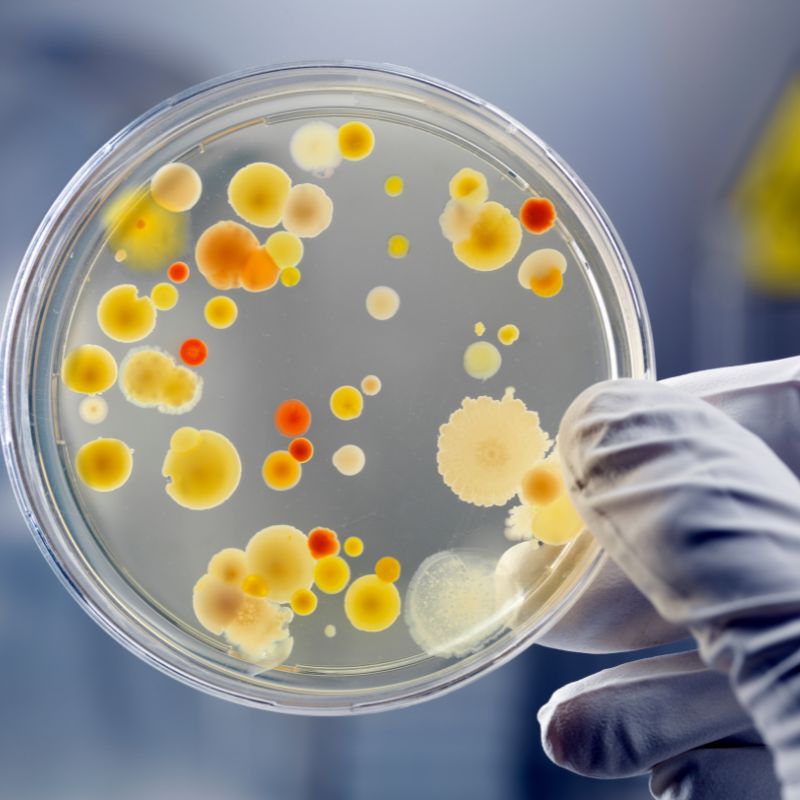Oklahoma City Water Quality at a Glance
exceeds health guidelines
Is Oklahoma City Water Safe to Drink?
EPA Compliant with Concerning Levels – Oklahoma City water meets all federal standards with zero violations in 2024. However, independent testing reveals significant concerns with disinfection byproducts exceeding health guidelines by 300+ times. Key issues include trihalomethanes, haloacetic acids, chromium-6, arsenic, and lead potential from older pipes. The water comes from surface reservoirs and undergoes chloramine disinfection, which creates the concerning byproducts.
⚠️ Key Concerns for Oklahoma City Residents
- Disinfection Byproducts: Trihalomethanes exceed health guidelines by 348 times; haloacetic acids exceed by 297 times – linked to cancer and fetal development issues
- Toxic Metals: Chromium-6 (hexavalent chromium) detected – the same cancer-causing chemical from Erin Brockovich case; arsenic at 2 ppb
- Lead Risk: No lead in treatment plants, but potential in service lines and pipes built before 1986; city replacing lead service lines
- Treatment Chemicals: Bromate levels exceed California health goals by 14 times; chloramine creates taste issues and byproducts
Read the full report below for detailed analysis, city-specific data, and actionable recommendations for Oklahoma City residents.
Oklahoma City – Oklahoma – Water Quality Report 2025: PFAS Testing, Infrastructure Concerns & Safety across your city
Oklahoma City’s Utilities Department manages a comprehensive water system serving over 1.4 million residents across 17 communities in Central Oklahoma. The system includes approximately 3,000 miles of water mains, multiple reservoirs, and two advanced treatment facilities delivering water to the greater Oklahoma City region.
The city draws its drinking water from seven surface water reservoirs across five counties including Lake Hefner and Lake Overholser (fed by the North Canadian River), Lake Stanley Draper (fed by water from Lake Atoka and McGee Creek Reservoir via the 100-mile Atoka pipeline), Canton Lake, and Sardis Lake as supplemental sources. Oklahoma City’s water consistently meets all federal and state quality standards with zero violations in 2024, though independent testing reveals concerns with disinfection byproducts that exceed health guidelines by hundreds of times. The city uses chloramine disinfection at both the Hefner and Draper Water Treatment Plants, which creates trihalomethanes and haloacetic acids as byproducts while effectively controlling pathogens.

Oklahoma City Water Quality: Current Status (2024-2025)
Latest Testing Results
- Lead Levels: The most recent testing period showed 90th percentile lead levels of 0.62 parts per billion (ppb), well below the EPA action level of 15 ppb. This testing is conducted specifically in homes with potential lead service lines and represents monitoring across the distribution system.
- Testing Scope: Oklahoma City conducts over 200,000 water quality tests annually throughout the system, with comprehensive monitoring of regulated contaminants and emerging compounds including PFAS, which currently shows levels below 4 parts per trillion.
- Compliance Status: Oklahoma City’s water meets or exceeds all federal and state drinking water standards, maintaining full compliance with EPA and Oklahoma Department of Environmental Quality regulations with zero violations in 2024.
Diverse Water Sources
- Lake Hefner & Lake Overholser: Primary sources located in Oklahoma City, fed by the North Canadian River. These surface water sources accumulate naturally occurring minerals, agricultural runoff, and seasonal algae that can affect taste and odor.
- Lake Stanley Draper: Major source fed by the Atoka pipeline, which transports water approximately 100 miles from Lake Atoka and McGee Creek Reservoir in southeastern Oklahoma, providing high-quality water from less developed watersheds.
- Canton Lake & Additional Sources: Supplemental water sources including Sardis Lake used during peak demand periods and drought conditions, providing system resilience across multiple counties in Oklahoma.
Treatment Technology
- Dual Treatment Plants: The Hefner and Draper water treatment plants utilize conventional treatment processes including coagulation, sedimentation, filtration, and chloramine disinfection to ensure pathogen control.
- Chloramine Disinfection: Both treatment plants use chloramine (chlorine plus ammonia) as the primary disinfectant, which provides longer-lasting protection in the distribution system but creates disinfection byproducts including trihalomethanes and haloacetic acids.
- Contaminant Challenges: Despite effective treatment, independent testing shows disinfection byproducts exceed health guidelines significantly – trihalomethanes by 348 times and haloacetic acids by 297 times the recommended levels, along with detectable levels of chromium-6 and arsenic.
Infrastructure Development
- Lead Service Line Replacement: Oklahoma City’s Lead-Safe OKC initiative launched in October 2024 to inventory and replace lead service lines, with 8,500 service lines assessed and ongoing replacement of city-owned lead components.
- Distribution System Maintenance: Annual replacement of aging water mains prioritizing areas with frequent breaks and water loss, though some service lines and pipes built before 1986 may still contain lead.
- Advanced Monitoring: Implementation of enhanced monitoring systems including real-time water quality sensors and expanded testing protocols to detect emerging contaminants and maintain regulatory compliance.
Customer Support Programs
Oklahoma City provides extensive customer support including free basic water quality testing for residents experiencing taste, odor, or quality concerns. The H2O Access program offers financial assistance for water bill payments, while conservation programs promote efficient water use through rebates and education. The city maintains transparent water quality reporting through annual Consumer Confidence Reports and proactive communication about any water quality issues. However, residents concerned about disinfection byproducts, chromium-6, or other contaminants detected above health guidelines may want to consider NSF-certified filtration systems for additional protection.
Recommendations for Oklahoma City Residents

Request Water Testing
Oklahoma City offers free basic water quality testing for residents. Call (405) 297-3056 for general water quality questions or visit okc.gov/utilities to request testing, especially if you notice unusual taste, odor, or color in your water.

Consider Filtration
Due to disinfection byproducts exceeding health guidelines by hundreds of times, consider NSF-certified filters that remove trihalomethanes, haloacetic acids, chromium-6, and other contaminants. Look for NSF Standards 42, 53, and 58 certifications.

Check for Lead Risks
If your home was built before 1986, contact the Lead-Safe OKC program to assess potential lead service lines. While city testing shows low lead levels (0.62 ppb), individual homes may have higher concentrations depending on plumbing materials.

Follow Watering Restrictions
Oklahoma City uses a year-round odd/even watering schedule based on address numbers. During drought, additional restrictions may apply. Check current status at okc.gov/departments/utilities or by calling the Water Conservation Hotline at (405) 297-3153.

Report Concerns
Use the OKC Connect app or call the 24-hour Water Line at (405) 297-3334 to report water main breaks, quality issues, or leaks. For water quality concerns, contact (405) 297-3056 during business hours.
Quality News About Your Water
Get the comprehensive water quality news coverage you need with our dedicated US Water News Service. From coast to coast, we deliver in-depth reporting and expert analysis on PFAS contamination, EPA regulatory changes, infrastructure developments, and emerging water safety issues affecting communities nationwide. While mainstream media only covers the biggest stories, we provide the detailed, ongoing coverage that helps you understand the full scope of America’s water challenges. Whether you’re a concerned citizen, water professional, or community leader, our daily updates and analytical insights keep you informed about the issues that matter most to public health and environmental safety.
Frequently Asked Questions
Is Oklahoma City’s tap water safe to drink?
Yes, Oklahoma City’s tap water meets all federal and state safety standards with zero violations in 2024. The city conducts over 200,000 annual quality tests to ensure regulatory compliance and pathogen control.
However, independent testing reveals concerning levels of disinfection byproducts that exceed health guidelines by hundreds of times, along with detectable chromium-6 and arsenic. While EPA-compliant, these contaminants may pose long-term health risks including increased cancer risk and developmental issues. The city’s lead levels are relatively low (0.62 ppb 90th percentile), but homes built before 1986 should be tested individually for lead service lines and plumbing components.
What are the main contaminants of concern in Oklahoma City water?
The primary concerns in Oklahoma City’s water include:
• Disinfection Byproducts: Trihalomethanes exceed health guidelines by 348 times and haloacetic acids by 297 times – both linked to cancer and fetal development issues
• Chromium-6 (Hexavalent Chromium): The same cancer-causing chemical highlighted in the Erin Brockovich case, with no EPA legal limit currently established
• Arsenic: Detected at 2 parts per billion, a known carcinogen that comes from natural sources and human activities
• Bromate: Cancer-causing disinfection byproduct that exceeds California health goals by 14 times
• Lead Potential: While city testing shows low levels, individual homes with pre-1986 plumbing may have higher concentrations
These contaminants result from the chloramine disinfection process and source water contamination from agricultural and industrial activities.
How does Oklahoma City ensure water security during droughts?
Oklahoma City has developed a comprehensive drought management strategy:
• Diverse water sources: Seven surface water reservoirs across five counties provide redundancy, including Lake Hefner, Lake Overholser, Lake Stanley Draper, Lake Atoka, McGee Creek Reservoir, Sardis Lake, and Canton Lake
• Long-distance infrastructure: The 100-mile Atoka pipeline and planned second pipeline provide access to high-quality water from southeastern Oklahoma
• Tiered drought response: Progressive water restrictions activated based on reservoir levels and climate conditions
• Conservation programs: Year-round odd/even watering schedule and rebate programs for water-efficient fixtures
• Regional partnerships: Cooperation with surrounding communities and water authorities to share resources during emergencies
These measures have successfully maintained water security through significant drought periods, ensuring reliable supply for over 1.4 million residents.
What filtration options are recommended for Oklahoma City residents?
Given the elevated levels of disinfection byproducts and other contaminants, residents should consider:
Recommended Filter Types:
• Activated Carbon Filters (NSF 42/53): Effective for trihalomethanes, haloacetic acids, chloramine taste/odor, and some organic contaminants
• Reverse Osmosis Systems (NSF 58): Most comprehensive removal including arsenic, chromium-6, lead, and most disinfection byproducts
• Multi-stage Systems: Combination carbon and RO systems for maximum contaminant removal
Installation Options:
• Point-of-use (kitchen sink) for drinking water
• Whole-house systems for comprehensive protection
• Pitcher filters for basic improvement (less effective for all contaminants)
Always verify NSF certification and ensure filters are rated for the specific contaminants detected in Oklahoma City water. Regular filter replacement is essential for continued effectiveness.
Contaminants of Concern

Disinfection Byproducts
Source: Trihalomethanes and haloacetic acids form when chloramine disinfectant reacts with naturally occurring organic matter in source water from lakes and reservoirs
Health Effects: Linked to increased cancer risk (bladder, colon, rectal), liver and kidney damage, reproductive issues, and harm to fetal development during pregnancy
Current Status: Trihalomethanes exceed Environmental Working Group health guidelines by 348 times; haloacetic acids exceed guidelines by 297 times, representing the most significant concern in Oklahoma City water

Toxic Metals
Chromium-6 (Hexavalent Chromium): A highly toxic metal and known carcinogen with no current EPA legal limit. Can contaminate water from natural sources or industrial pollution, made famous by the Erin Brockovich case
Arsenic: Present at 2 parts per billion, this naturally occurring toxic metal is a known carcinogen that can cause skin cancer, lung cancer, and other health issues even at low levels
Current Status: Both metals are detected in Oklahoma City water above health-protective levels recommended by independent health organizations, requiring effective filtration for removal
Please read – our information
The information presented on cleanairandwater.net is compiled from official water quality reports, trusted news sources, government websites, and public health resources. While we strive for accuracy and thoroughness in our presentations, we are not scientists, engineers, or qualified water quality professionals.
Our mission is to present water quality information in an accessible, real-world format that helps people understand what’s in their water and make informed decisions about their health and safety. We believe that complex environmental information should be available to everyone in a format that’s easy to understand.
We make every effort to ensure our content is current and accurate, but we cannot guarantee that all information is complete or error-free. This website should not replace official communications from your local water utility or health department. We always recommend consulting official sources for the most up-to-date information regarding your specific water system.
Clean Air and Water is not liable for any unintentional errors, omissions, or outdated information. The content on this site is provided for informational purposes only and should not be considered professional advice.


